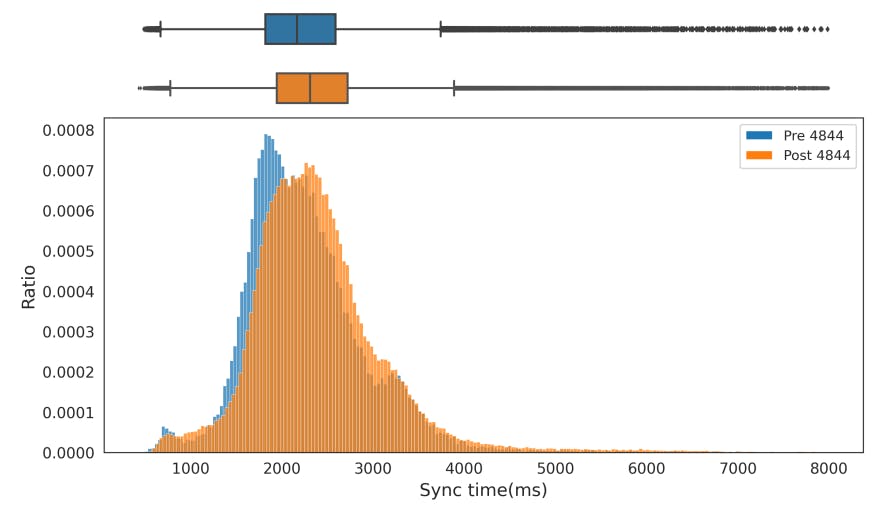
"The data reflects an increase in metrics post-EIP-4844, with the fork rate witnessing a noticeable increase. Sync time significantly increased, but only half can be attributed to EIP-4844."
"Logistic regression analysis shows that as synchronization time increases, the likelihood of a slot forking also increases, indicated by a positive coefficient of 1.5."
"A comparative box plot illustrates the distribution of sync time for slots before and after EIP-4844, showing a shift towards slower synchronization times after implementation."
"The analysis of average CSP time by blob count reveals an increase post-EIP-4844, but attributing this change to the implementation remains inconclusive."
After EIP-4844 implementation, consensus security metrics show an overall increase with noticeable changes in fork rates and synchronization times. Sync time increased significantly, with half attributed to EIP-4844's impact. Logistic regression suggests a positive correlation between synchronization time and the likelihood of slot forking. Visual representations, including box plots and histograms, indicate a shift towards slower sync times. While CSP time increased post-implementation, attributing this solely to EIP-4844 remains inconclusive. The analysis highlights the complexity of these consensus dynamics.
Read at Hackernoon
Unable to calculate read time
Collection
[
|
...
]